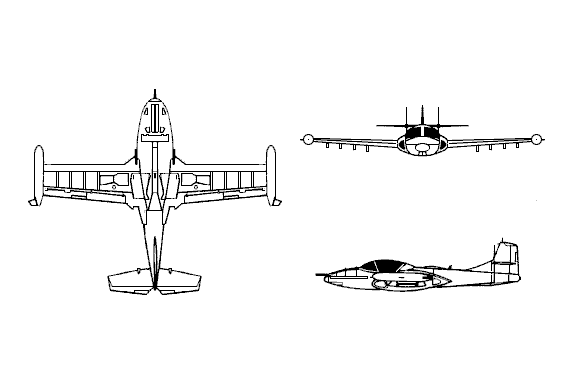




The Cessna A-37 was derived from the proven T-37 trainer in 1962. Two YAT-37D prototypes were produced from existing T-37s for evaluation by the United States Air Force in the counterinsurgency role. Combat tests in South Vietnam showed that the YAT-37D was underpowered. A decision was made to fit the A-37 with two General Electric J-85 turbojets. The new A-37A could double its takeoff weight and thus carry a larger bomb load. Five hundred seventy-seven A-37s were built. A-37s were used with great success in Southeast Asia. The South Vietnamese Air Force was also equipped with the Dragonfly.
The OA-37 Dragonfly derivative was an armed observation aircraft developed during the Vietnam War. The OA-37 "DRAGONFLY" replaced the aging O-2A in the early 1980s. It continued in use with Air Guard and Reserve units as observation platforms until the 1980s.
Specifications | |
| Builder | Cessna Aircraft Co. |
| Power Plant | Two Continental J69-T-25 turbojet engines |
| Thrust | 1,025 pounds (461.25 kilograms), each engine |
| Length | 29 feet, 3 inches (8.9 meters) |
| Height | 9 feet, 2 inches (2.8 meters) |
| Maximum Takeoff Weight | 6,625 pounds (2,981 kilograms) |
| Wingspan | 33 feet, 8 inches (10.2 meters) |
| Speed | 315 mph (Mach 0.4 at sea level) |
| Ceiling | 35,000 feet (10.6 kilometers) |
| Range | 460 miles (400 nautical miles) |
| Armament | T-provisions for external armament |
| Unit Cost | $164,854 |
| Crew | Two, student pilot and instructor pilot |


